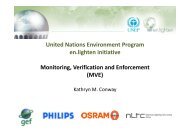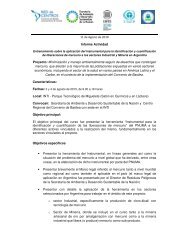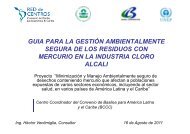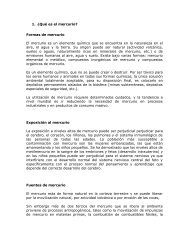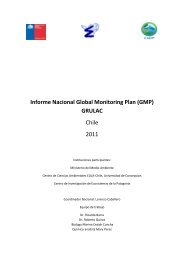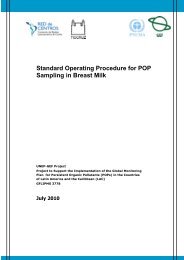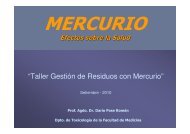Report on Global Monitoring Project Pesticide Research Laboratory ...
Report on Global Monitoring Project Pesticide Research Laboratory ...
Report on Global Monitoring Project Pesticide Research Laboratory ...
Create successful ePaper yourself
Turn your PDF publications into a flip-book with our unique Google optimized e-Paper software.
Preamble:<br />
The titled project was initiated by the Regi<strong>on</strong>al Center of the Stockholm C<strong>on</strong>venti<strong>on</strong> Latin<br />
America and the Caribbean (SCU), Laboratorio Tecnológico del Uruguay (LATU), M<strong>on</strong>tevideo,<br />
Uruguay. The financial support for the project was obtained from GEF/UNEP. A Memorándum<br />
of Understanding (MOU) between the <strong>Pesticide</strong> <strong>Research</strong> <strong>Laboratory</strong> (PRL) , University of the<br />
West Indies (UWI), Jamiaca and LATU was formally established in 2010 to strengthen the<br />
nati<strong>on</strong>al m<strong>on</strong>itoring capacity, to build regi<strong>on</strong>al testing capacities and to develop data <strong>on</strong> POPs to<br />
be incorporated in the global report for the C<strong>on</strong>ference of the Parties of the Stockholm<br />
C<strong>on</strong>venti<strong>on</strong>.<br />
Introducti<strong>on</strong>:<br />
The Governing Council of UNEP decided in May 1995 to begin investigating POPs. Initially a<br />
short list of the following twelve POPs known as „Dirty Doz<strong>on</strong>” was made to begin<br />
investigati<strong>on</strong>:<br />
Aldrin, chlordane, DDT, dieldrin, endrin, heptachlor, hexachlorobenzene, mirex,polychlorinated<br />
biphenyls, polychlorinated dibenzo-p-dioxins, polychlorinated dibenzofurans, and toxaphene.<br />
These compounds are halogenated aromatic compounds that are widespread and persistent<br />
envir<strong>on</strong>mental pollutants (1).<br />
POPs have three chemical characteristics that make them<br />
intrinsically hazardous: they are stable (persistent), they are fat-seeking, and they have the<br />
potential to act as endocrine disruptors (2).<br />
The highly lipophilic and hydrophobic PCBs, dioxins (PCDDs and PCDFs), and related<br />
compounds tend to partiti<strong>on</strong> into soil and sediment, bioc<strong>on</strong>centrate from water to aquatic animal,<br />
and biomagnify up the multistep food chain (3). Humans are also high <strong>on</strong> the food chain, eating<br />
meat and dairy products from herbivores, as well as fish and plants (4). More than 90% of the<br />
total daily human exposure to PCBs and dioxins is made up of oral intake from food, whereas<br />
other routes, e.g., water, air and soil, c<strong>on</strong>tribute to less than 10% of total exposure (4)<br />
The human fetus is exposed to PCBs and dioxins through placental transport, and higher<br />
quantities of these compounds are transferred to the infant during breast-feeding. The<br />
c<strong>on</strong>centrati<strong>on</strong> of these compounds in breast milk is dependent <strong>on</strong> the maternal PCB and dioxin<br />
body burden (5). This body burden is the result of accumulati<strong>on</strong> of PCBs and dioxins over many<br />
years, especially in fat tissue, combined with the low metabolic degradati<strong>on</strong> and rate of excreti<strong>on</strong><br />
(1).





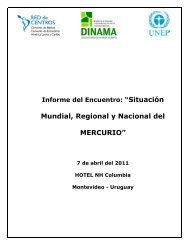
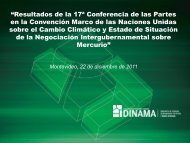

![COP_aire [Compatibility Mode] - Centro Coordinador de Basilea ...](https://img.yumpu.com/44106171/1/190x134/cop-aire-compatibility-mode-centro-coordinador-de-basilea-.jpg?quality=85)
